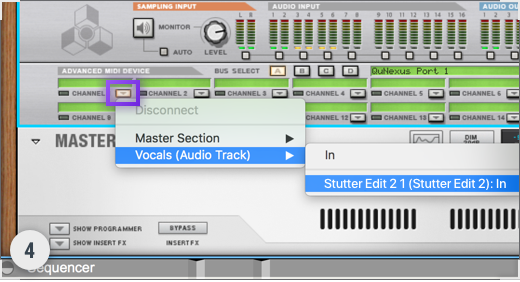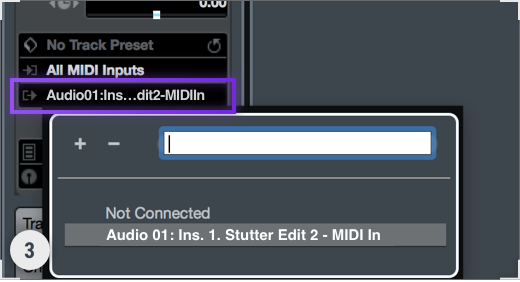

And one of the beautiful things about digital tools is they cannot be physically broken from abuse. While plugin presets certainly have their place, it’s worth remembering that you control the plugin, not the other way around. The means of exploring the aesthetics of error is only limited by the imagination of the artist.

It is definitely worth exploring the plugins you already own before dropping your hard-earned coin on dedicated glitch-ware. Sophisticated Modulation and Sequencing devices.Saturation, Distortion and Bit Reducing devices.Nearly any sort of plugin can be driven to glitch out with extreme settings, but some are more amenable to experimentation than others. What follows is a long but admittedly incomplete list of audio processing plugins that can be used to create glitchy goodness.
#Stutter edit pro tools set up software#
Pangburn – “5 Artists Who Are Masters of Glitch Music”Īside from using damaged CDs or vinyl, or malfunctioning digital equipment, there are several ways to create glitch effects using software that is designed specifically for the aesthetic, as well as with traditional processing effects. Check out this article with examples by D.J. If you haven’t explored glitch music I highly encourage you to have a listen. Effects plugins were developed to synthesize glitch effects and artists began to “misuse” standard plugins in ways that produced the unexpected and expressed “the sound of digital malfunction”.
#Stutter edit pro tools set up full#
(Church)īut although glitch was borne from the unexpected, the sounds that emerged were soon incorporated by artists as raw material to be sampled, controlled, sequenced and further manipulated with the full palette of digital sound processing. The artists had accidentally “stumbled upon the creative technique of glitch… borrowed a scratched jazz CD from a local library…” The stuttering effect of the defective CD became the impetus for a new aesthetic and ultimately the genre known as Glitch and later, the sub-genre Glitch-hop (late 90’s). The German experimental group known as Oval first explored the possibilities of failure with the release of Oktober 91 (1991). But more specifically, it is from the ‘failure’ of digital technology that this new work has emerged: glitches, bugs, application errors, system crashes, clipping, aliasing, distortion, quantization noise…” (Cascone)

“… aesthetic was developed in part as a result of the immersive experience of working in environments suffused with digital technology: computer fans whirring, laser printers churning out documents, the sonification of user interfaces, and the muffled noise of hard drives. He proposes that Marshall McLuhan’s well-known phrase, “The medium is the message” is no longer valid and that “… specific tools themselves have become the message”. Kim Cascone identifies these trends as “Post-digital”. These changes were revolutionary at the time, but as these new technologies became commonplace and banal, composers began to look to the error as a new source of the material. With the digital age came unprecedented levels of accuracy and audio fidelity not possible in analog systems. (Klotz) And there’s an old saying in jazz: “If you play a mistake, play it again.” In Kelsey Klotz’s essay, The Art of the Mistake, she suggests that “wrong notes in jazz are often considered to be opportunities for improvisatory exploration a note is only wrong if the performer does not know what to do with it.” She quotes Art Tatum as saying, “There’s no such thing as a wrong note” and Bill Evans responding, “There are no wrong notes, only wrong resolutions”.

Mistakes have long been embraced, especially in jazz. I suspect that the search for and the acceptance of the unexpected in a musical context has been around as long as there have been musicians.


 0 kommentar(er)
0 kommentar(er)
